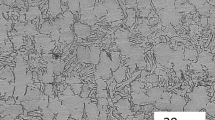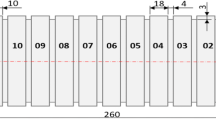Abstract
The unique combination of corrosion resistance, mechanical properties, and biocompatibility have made commercially pure titanium (CP-Ti) widely used as bio-implant materials. The bio-implant requires high-quality surfaces, with specific characteristics for each utilization. Due to high temperatures in the cutting zone and the high chemical affinity, titanium is usually machined with cutting fluid. However, the environmental impacts drive research towards eliminating or reducing the utilization of these fluids. Therefore, a Box-Behnken Design of experiments was used to investigate the effects of cutting parameters (cutting speed, feed rate, and depth of cut) and lubri-cooling conditions (dry, MQL, RQL, and conventional flood) on the surface roughness after turning CP-Ti (grade 4). Statistical analysis confirmed that the feed rate is the most significant cutting parameter for controlling surface roughness, and it must be kept at a low level to improve the surface finish. The analysis of the results indicates that each lubri-cooling atmosphere requires appropriate levels of cutting speed and depth of cut to enhance the workpiece surface finish. The optimization of the experiment through the desirability function showed that RQL turning is the best choice to minimize surface roughness on CP-Ti Grade 4.







Similar content being viewed by others
Data availability
The manuscript has no associated data in a data repository.
References
Donachie MJ Jr (2000) Titanium: a technical guide, 2nd edn. ASM International, Materials Park
Ezugwu EO, Bonney J, Yamane Y (2003) An overview of the machinability of aeroengine alloys. J Mater Process Technol 134(2):233–253. https://doi.org/10.1016/S0924-0136(02)01042-7
Ezugwu EO, Wang ZM (1997) Titanium alloys and their machinability – a review. J Mater Process Technol 68(3):262–274. https://doi.org/10.1016/S0924-0136(96)00030-1
Lütjering G, Williams JC (2007) Titanium. Springer-Verlag, Berlin. https://doi.org/10.1007/978-3-540-73036-1
Boyer R, Collings EW, Welsch G (1994) Materials properties handbook: titanium alloys. ASM International, Materials Park
Lincks J, Boyan BD, Blanchard CR, Lohmann CH, Liu Y, Cochran DL, Dean DD, Schwartz Z (1998) Response of MG63 osteoblast-like cells to titanium and titanium alloy is dependent on surface roughness and composition. Biomaterials 19(23):2219–2232. https://doi.org/10.1016/S0142-9612(98)00144-6
Jackson MJ, Ahmed W (2007) Surface engineering artificial heart valves to improve quality of life and lifetime using modified diamond-like coatings. In: Surface engineered surgical tools and medical devices. Springer, Boston. https://doi.org/10.1007/978-0-387-27028-9_6
Gadelmawla ES, Koura MM, Maksoud TMA, Elewa IM, Soliman HH (2002) Roughness parameters. J Mater Process Technol 123(1):133–145. https://doi.org/10.1016/S0924-0136(02)00060-2
Stephenson DA, Agapiou JS (2016) Metal cutting: theory and practice, 3rd edn. CRC Press, Boca Raton
Niknam SA, Khettabi R, Songmene V (2014) Machinability and machining of titanium alloys: a review. In: Machining of titanium alloys – materials forming, machining and tribology. Springer, Berlin-Heidelberg. https://doi.org/10.1007/978-3-662-43902-9_1
Trent EM (1988) Metal cutting and the tribology of seizure: II movement of work material over the tool in metal cutting. Wear 128:47–64. https://doi.org/10.1016/0043-1648(88)90252-9
Rosa GC, Souza AJ, Possamai EV, Amorim HJ, Neis PD (2017) Wear analysis of ultra-fine grain coated carbide tools in hard turning of AISI 420C stainless steel. Wear 376-377(A):172–177. https://doi.org/10.1016/j.wear.2017.01.088
Revuru RS, Posinasetti NR, Ramana VV, Amrita M (2017) Application of cutting fluids in machining of titanium alloys – a review. Int J Adv Manuf Technol 91(5-8):2477–2498. https://doi.org/10.1007/s00170-016-9883-7
Park K, Yang G, Lee M, Jeong H, Lee S, Lee DY (2014) Eco-friendly face milling of titanium alloy. Int J Precis Eng Manuf 15(6):1159–1164. https://doi.org/10.1007/s12541-014-0451-5
Shokrani A, Dhokia V, Newman ST (2012) Environmentally conscious machining of difficult-to-machine materials with regard to cutting fluids. Int J Mach Tools Manuf 57:83–101. https://doi.org/10.1016/j.ijmachtools.2012.02.002
Dixit US, Sarma DK, Davim JP (2012) Environmentally friendly machining. Springer-Verlag, New York. https://doi.org/10.1007/978-1-4614-2308-9
Gupta K, Laubscher RF (2016) Sustainable machining of titanium alloys: a critical review. Proc Inst Mech Eng B J Eng Manuf 231(14):2543–2560. https://doi.org/10.1177/0954405416634278
Garcia RF, Feix EC, Mendel HT, Gonzalez AR, Souza AJ (2019) Optimization of cutting parameters for finish turning of 6082-T6 aluminum alloy under dry and RQL conditions. J Braz Soc Mech Sci Eng 41:317. https://doi.org/10.1007/s40430-019-1826-4
Astakhov V (2008) Ecological machining: near-dry machining. In: Machining. Springer, London. https://doi.org/10.1007/978-1-84800-213-5_7
Rahim EA, Sasahara H (2011) A study of the effect of palm oil as MQL lubricant on high speed drilling of titanium alloy. Tribol Int 44(3):309–317. https://doi.org/10.1016/j.triboint.2010.10.032
Rahim EA, Dorairaju H (2018) Evaluation of mist flow characteristic and performance in minimum quantity lubrication (MQL) machining. Meas 123:213–225. https://doi.org/10.1016/j.measurement.2018.03.015
Chetan BBC, Ghosh S, Rao PV (2016) Wear behavior of PVD TiN coated carbide inserts during machining of Nimonic 90 and Ti6Al4V superalloys under dry and MQL conditions. Ceram Int 42(13):14873–14885. https://doi.org/10.1016/j.ceramint.2016.06.124
Liu Z, Chen M, An Q (2015) Investigation of friction in end-milling of Ti-6Al-4 V under different green cutting conditions. Int J Adv Manuf Technol 78(5-8):1181–1192. https://doi.org/10.1007/s00170-014-6730-6
Kumar VSS, Ezilarasan C, Kumaran SS (2013) Experimental investigation and optimization of cutting parameters in machining of Ti6Al4V alloy by an MT-CVD insert. J Inst Eng India Ser C 94(2):155–163. https://doi.org/10.1007/s40032-013-0062-4
Montgomery DC (2017) Design and analysis of experiments, 9th edn. John Wiley & Sons, Hoboken
Gupta MK, Sood PK, Sharma VS (2016) Investigations on surface roughness measurement in minimum quantity lubrication turning of titanium alloys using response surface methodology and Box-Cox transformation. J Manuf Sci Prod 16(2):75–88. https://doi.org/10.1515/jmsp-2015-0015
Khan A, Maity K (2018) Influence of cutting speed and cooling method on the machinability of commercially pure titanium (CP-Ti) grade II. J Manuf Process 31:650–661. https://doi.org/10.1016/j.jmapro.2017.12.021
Sangwan KS, Saxena S, Kant G (2015) Optimization of machining parameters to minimize surface roughness using integrated ANN-GA approach. Procedia CIRP 29:305–310. https://doi.org/10.1016/j.procir.2015.02.002
Abbas AT, Sharma N, Anwar S, Hashmi FH, Jamil M, Hegab H (2019) Towards optimization of surface roughness and productivity aspects during high-speed machining of Ti–6Al–4 V. Materials 12(22):3749. https://doi.org/10.3390/ma12223749
Çelik YH, Kilickap E, Güney M (2017) Investigation of cutting parameters affecting on tool wear and surface roughness in dry turning of Ti-6Al-4 V using CVD and PVD coated tools. J Braz Soc Mech Sci Eng 39:2085–2093. https://doi.org/10.1007/s40430-016-0607-6
Chauhan S, Dass K (2012) Optimization of machining parameters in turning of titanium (grade-5) alloy using response surface methodology. Mater Manuf Process 27(5):531–537. https://doi.org/10.1080/10426914.2011.593236
Ramana MV, Vishnu AV, Rao GKM, Rao DH (2012) Experimental investigations, optimization of process parameters and mathematical modeling in turning of titanium alloy under different lubricant conditions. IOSR J Eng 2(1):86–101. https://doi.org/10.9790/3021-02186101
Ulutan D, Ozel T (2011) Machining induced surface integrity in titanium and nickel alloys: a review. Int J Mach Tools Manuf 51(3):250–280. https://doi.org/10.1016/j.ijmachtools.2010.11.003
Niharika ABP, Khan IA, Khan ZA (2016) Effects of cutting parameters on quality of surface produced by machining of titanium alloy and their optimization. Arch Mech Eng 63(4):531–548. https://doi.org/10.1515/meceng-2016-0030
Ramesh S, Karunamoorthy L, Palanikumar K (2008) Surface roughness in machining of titanium alloys. Mater Manuf Process 23(2):174–181. https://doi.org/10.1080/10426910701774700
Revankar GD, Shetty R, Rao SS, Gaitonde VN (2014) Analysis of surface roughness and hardness in titanium alloy machining with polycrystalline diamond tool under different lubricating modes. Mater Res 17(4):1010–1022. https://doi.org/10.1590/1516-1439.265114
Costa NR, Lourenço J, Pereira ZL (2011) Desirability function approach: a review and performance evaluation in adverse conditions. Chemom Intell Lab 107(2):234–244. https://doi.org/10.1016/j.chemolab.2011.04.004
Benardos PG, Vosniakos GC (2003) Prediction surface roughness in machining: a review. Int J Mach Tools Manuf 43(8):833–844. https://doi.org/10.1016/S0890-6955(03)00059-2
Acknowledgements
The authors thank Primuss Co. for the workpiece material, Quimatic/Tapmatic Co. for the nebulizer and cutting fluid applied in MQL/RQL conditions, Bondmann Chemistry Co. for the cutting fluid used in flood machining, and LAMEF/UFRGS for the workpiece chemical analysis.
Funding
This research did not receive any specific grant from funding agencies in the public, commercial, or not-for-profit sectors.
Author information
Authors and Affiliations
Contributions
Each author contributed to the research presented in this manuscript, approved the contents now presented, and agreed to the compliance with ethical standards.
Corresponding author
Ethics declarations
Ethics approval
The manuscript is original and has not been submitted for publication elsewhere (partially or in full). Also, the manuscript has not been submitted to more than one publication for simultaneous consideration.
Consent to participate
Not applicable (this research did not involve human subjects).
Consent for publication
All authors consent to the manuscript’s publication in the IJAMT, should the article be accepted by the Editor-in-chief upon completion of the refereeing process.
Competing interests
The authors declare no competing interests.
Additional information
Publisher’s note
Springer Nature remains neutral with regard to jurisdictional claims in published maps and institutional affiliations.
Rights and permissions
About this article
Cite this article
Telles, F., Amorim, H.J. & Souza, A.J. Comparative assessment of lubri-cooling conditions when turning CP-Ti Grade 4 based on surface roughness. Int J Adv Manuf Technol 113, 365–378 (2021). https://doi.org/10.1007/s00170-021-06672-9
Received:
Accepted:
Published:
Issue Date:
DOI: https://doi.org/10.1007/s00170-021-06672-9




